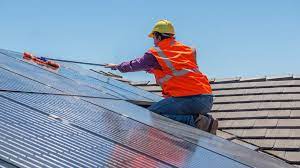Introduction to Home Solar Panels
With growing concerns about environmental sustainability and rising energy costs, many homeowners are turning to solar power as a clean and renewable energy source. Installing solar panels on your home not only reduces your carbon footprint but also allows you to generate your own electricity and save money on utility bills. However, to ensure maximum efficiency and longevity of your solar panel system, regular maintenance is essential.
Understanding Solar Panel Components
Before diving into maintenance tips, it’s important to understand the basic components of a home solar panel system. Solar photovoltaic (PV) systems consist of solar panels, inverters, racking or mounting hardware, and wiring. Solar panels collect sunlight and convert it into electricity, which is then sent to the inverter to be converted into usable AC power for your home.
Benefits of Regular Maintenance
Regular maintenance is key to maximizing the performance and lifespan of your home solar panels. By keeping your panels clean and well-maintained, you can ensure optimal energy production and efficiency, ultimately saving you money on energy costs over time. Additionally, routine maintenance helps identify and address potential issues before they escalate into costly repairs.
Inspecting for Damage and Debris
Start by visually inspecting your solar panels for any signs of damage, such as cracks, scratches, or physical wear. Additionally, remove any dirt, leaves, or bird droppings that may be obstructing sunlight and reducing panel efficiency. Regular cleaning and inspection can help prevent damage and ensure consistent energy production.
Cleaning Solar Panels
Cleaning your solar panels regularly is essential for maintaining optimal efficiency. Depending on your location and climate, you may need to clean your panels more or less frequently. Use a soft brush or sponge and mild detergent to gently scrub away dirt and grime, avoiding abrasive cleaners or rough materials that could scratch the panels. Rinse thoroughly with clean water and allow the panels to dry completely before reactivating the system.
Checking Inverter Performance
Monitor your inverter regularly to ensure it is functioning properly. Check for any error messages or warning indicators and consult the manufacturer’s manual for troubleshooting tips. Keep an eye on inverter readings to ensure consistent performance and energy production. If you notice any issues, contact a qualified technician for assistance.
Assessing Energy Production
Monitor your solar panel system’s energy production data regularly to identify any changes or anomalies. Compare current energy production levels to historical data to spot trends and potential performance issues. Sudden drops in energy production could indicate shading, damage, or other issues that require attention.
Trimming Trees and Vegetation
Prevent shading and obstruction of sunlight by trimming trees and vegetation near your solar panels. Branches and foliage can cast shadows on your panels, reducing their efficiency and energy production. Regularly prune trees and bushes to maintain clear access to sunlight and ensure optimal performance.
Inspecting Mounting Hardware
Check the mounting hardware of your solar panels for signs of wear or damage. Loose bolts or rust can compromise the stability of your panels and pose a safety risk. Ensure that the panels are securely attached to the roof and that all mounting hardware is in good condition.
Monitoring for Wildlife Activity
Keep an eye out for signs of wildlife activity around your solar panels, such as nesting materials or droppings. Birds and pests can cause damage to panels and wiring if left unchecked. Install deterrents such as bird spikes or mesh barriers to prevent nesting and protect your solar panel system.
Protecting Against Extreme Weather
Reinforce your solar panels to withstand extreme weather conditions such as hail, snow, and high winds. Invest in hail-resistant panels or add protective coatings to reduce the risk of damage. Secure panels in place during severe weather events to prevent them from becoming dislodged or damaged.
Understanding Warranty Coverage
Review the warranties provided by the solar panel manufacturer and installer to understand what is covered and what maintenance tasks may void the warranty. Some warranties may require regular maintenance and inspections to remain valid. Keep detailed records of maintenance activities and any warranty-related correspondence for future reference.
DIY vs. Professional Maintenance
While some maintenance tasks can be performed DIY, such as cleaning and visual inspections, others may require professional expertise. Consider hiring a qualified technician for tasks such as electrical inspections, inverter troubleshooting, and repairs. Professional maintenance services can help ensure that your solar panel system remains safe, efficient, and reliable.
Scheduling Regular Maintenance
Create a maintenance schedule based on manufacturer recommendations and local climate conditions. Set reminders for routine tasks such as cleaning, inspections, and inverter checks. Stay proactive about maintenance to prevent issues and address any concerns promptly.
Conclusion
Regular maintenance is essential for ensuring the long-term performance and reliability of your home solar panel system. By following these simple tips and incorporating regular maintenance into your routine, you can maximize energy production, extend the lifespan of your panels, and enjoy the benefits of clean and sustainable solar energy for years to come.

